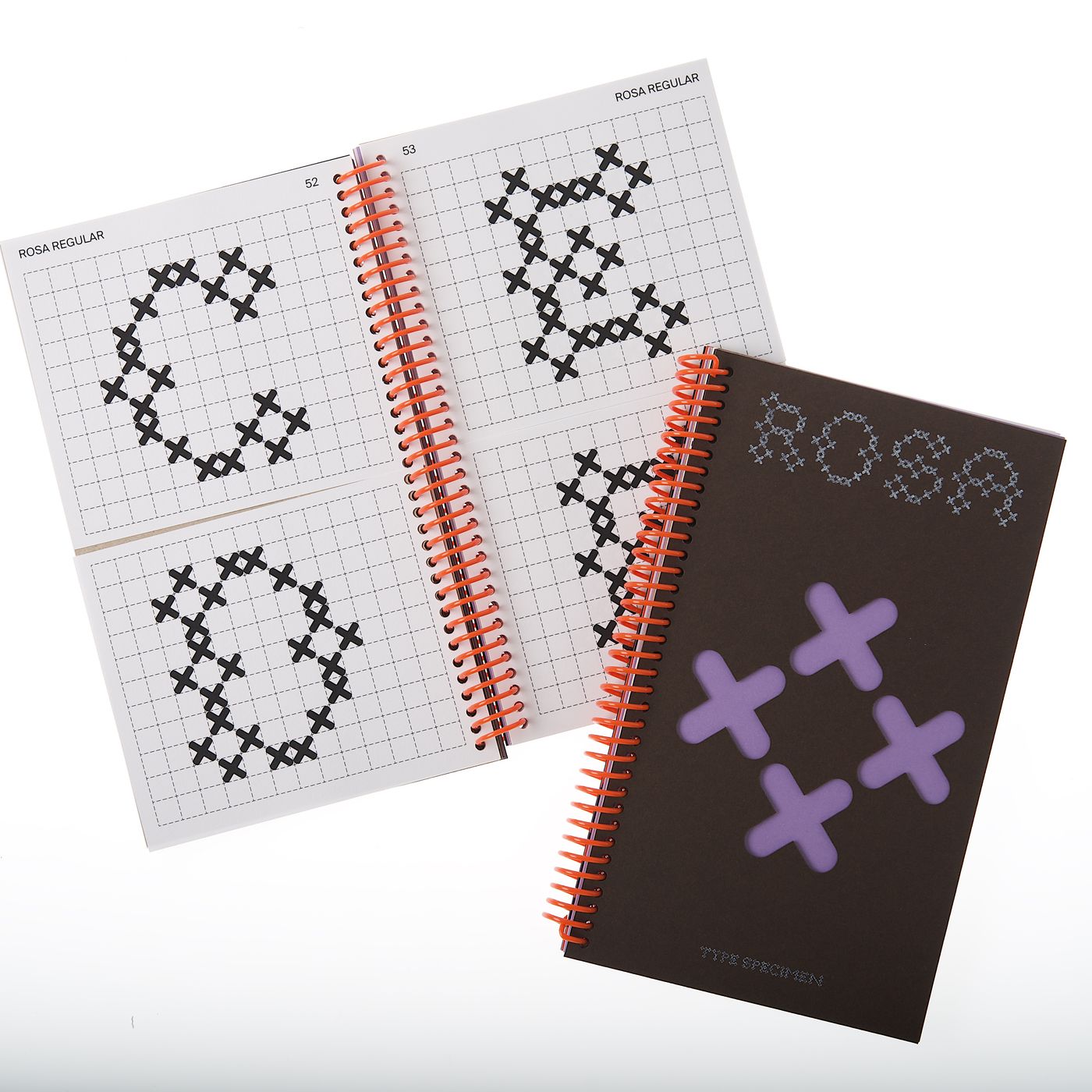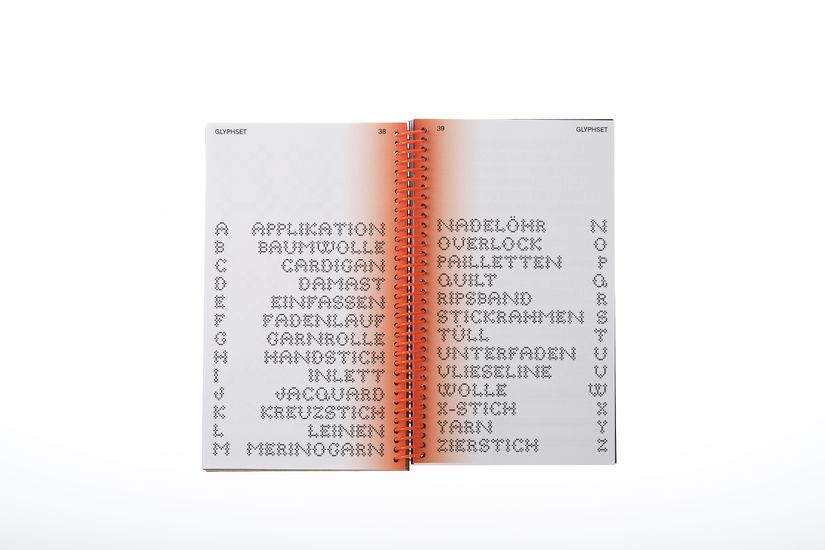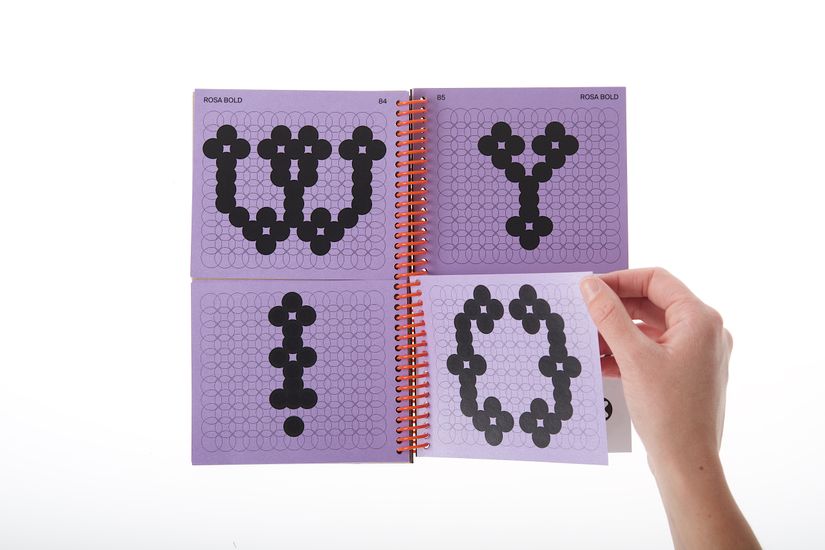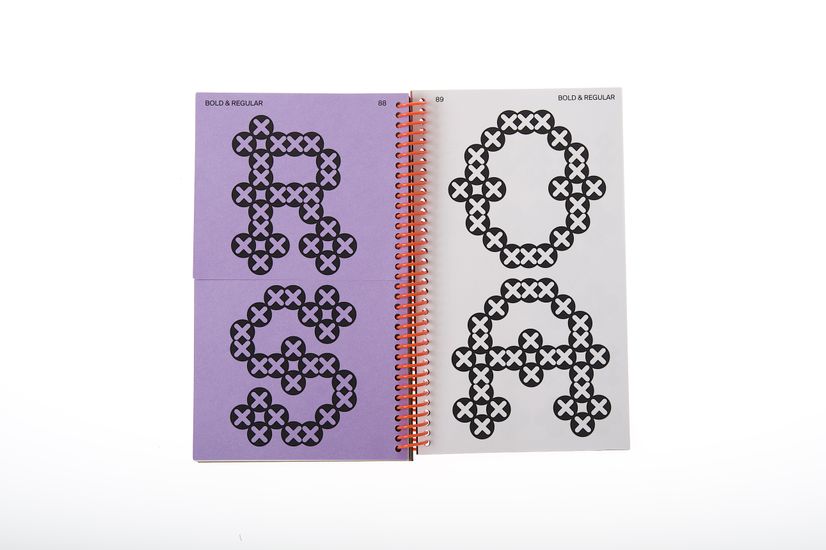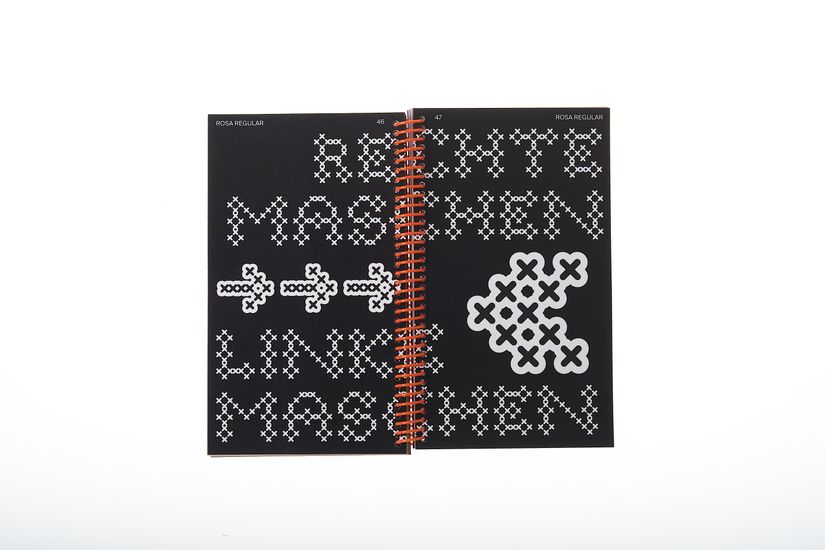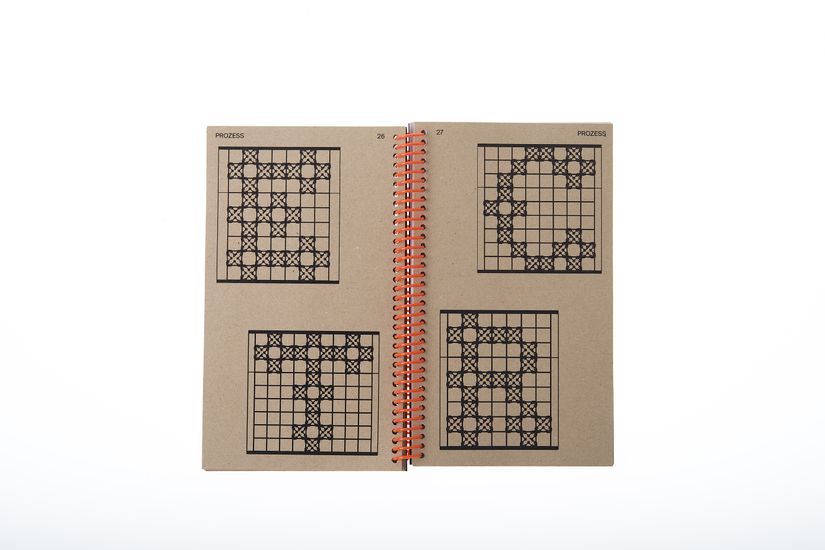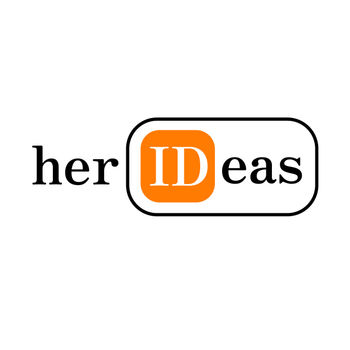Textile Typografie - ROSA
Vivien Merler
[DEU] TEXTILE TYPOGRAFIE - ROSA
EINE SCHRIFTART ZWISCHEN HANDWERK UND DIGITALEM DESIGN
Dieses Projekt beschäftigt sich mit der Entwicklung einer Display-Schrift, die eine Parallele zwischen Pixel und Stickerei herstellt. Ausgangspunkt bildet ein Alphabet aus der Kreuzstich-Mustersammlung der Südtiroler Künstlerin Anna Wielander-Platzgummer, das auf einer typografischen Bestickung eines Versehtuches aus dem Jahr 1723 basiert.
Die Arbeit untersucht, wie historische Stickmuster, die von Frauen für den handwerklichen Gebrauch entworfen wurden, als gestalterische Ressource für die Digitalisierung und typografische Praxis genutzt werden können. Im Mittelpunkt steht die Erforschung rasterbasierter Typografie als binäres System, das sowohl die Logik früher Bitmap-Schriften als Urform der digitalen Typografie als auch die Struktur des Kreuzstichs reflektiert. Durch die Übertragung analoger Stickmuster in ein digitales Gestaltungsraster wird der Prozess der Übersetzung zwischen Handarbeit und Computerästhetik sichtbar gemacht.
Das Ergebnis ist eine Hybridform zwischen digitaler und analoger Typografie: Jeder Buchstabe fungiert gleichzeitig als Font und Stickanleitung, kann digital gesetzt oder manuell gestickt werden. Dadurch entsteht ein dialogisches Verhältnis zwischen Typografie und textiler Handwerkskunst, das traditionelle Formen weiblicher Arbeit in einen zeitgenössischen digitalen Kontext überführt und die Verbindung zwischen Schriftgestaltung, Materialität und kulturellem Gedächtnis neu interpretiert.
[ENG] TEXTILE TYPOGRAPHY - ROSA
A TYPEFACE BETWEEN TEXTILE CRAFTSMANSHIP AND DIGITAL DESIGN
This project explores the development of a display font that draws parallels between pixels and embroidery. The starting point is an alphabet from the crossstitch pattern collection of South Tyrolean artist Anna Wielander-Platzgummer, which draws inspiration from the typographic embroidery on a cloth from 1723.
The work explores how historical embroidery patterns designed by women for craft use can be used as a creative resource for digitization and typographic practice. The focus is on researching grid-based typography as a binary system that reflects both, the logic of early bitmap fonts as the archetype of digital typography as well as the structure of cross-stitch. By transferring analog embroidery patterns into a digital design grid, the process of translation between handicraft and digital design aesthetics is made visible.
The result is a hybrid form between digital and analog typography: each letter doubles as a font and embroidery pattern and can thus be typeset digitally or embroidered by hand. This creates a dialogue between typography and textile craftsmanship, transferring traditional forms of female labor into a contemporary digital context and reinterpreting the connection between type design, materiality, and cultural memory.
[ITA] TIPOGRAFIA TESSILE - ROSA
UN CARATTERE TIPOGRAFICO TRA ARTIGIANATO TESSILE E DESIGN DIGITALE
Questo progetto esplora lo sviluppo di un carattere tipografico che traccia un parallelo tra pixel e ricamo. Il punto di partenza è un alfabeto tratto dalla collezione di schemi per ricamo a punto croce dell’artista altoatesina Anna Wielander-Platzgummer, che si ispira ad un ricamo tipografico su un tessuto del 1723.
Il lavoro esplora come gli schemi di ricamo storici disegnati dalle donne per uso artigianale possano essere utilizzati come risorsa creativa per la digitalizzazione e la pratica tipografica. L’attenzione si concentra sulla ricerca della tipografia basata su griglia come sistema binario che riflette sia la logica dei primi font bitmap come archetipo della tipografia digitale, sia la struttura del punto croce. Trasferendo gli schemi di ricamo analogici in una griglia di progettazione digitale, il processo di traduzione tra creatività artigianale ed estetica del design digitale diventa visibile.
Il risultato è una forma ibrida tra tipografia digitale e analogica: ogni lettera diventa sia un font che un pattern di ricamo e può quindi essere composta digitalmente o ricamata a mano. Questo crea un dialogo tra tipografia e artigianato tessile, trasferendo le forme tradizionali del lavoro femminile in un contesto digitale contemporaneo e reinterpretando il legame tra design tipografico, materialità e memoria culturale.


